Imagine stepping into your garden, the air crisp and fresh, greeted by the vibrant hues of flourishing plants. Whether you’re a newcomer to the world of gardening or a seasoned green thumb, the secret to a thriving garden often lies in one simple yet crucial element: timing. Knowing the best time to water your garden plants isn’t just about keeping them alive; it’s about unlocking their full potential and witnessing their extraordinary beauty.
This guide is your ticket to transforming your garden into a lush paradise, brimming with life and vigor. From the sun-drenched corners to the shady nooks, understanding the rhythm of your plants’ needs will help you nurture them with confidence and ease. Dive into the practical benefits of correctly timed watering, and you’ll not only save water but also ensure your garden thrives, rewarding you with abundant blooms and bountiful harvests. Whether you’re nurturing a few potted plants indoors or managing a sprawling outdoor oasis, this guide will empower you with the knowledge to succeed and enjoy the unparalleled satisfaction of a garden well-tended.
Tomato Plants (Watering for Optimal Fruit Growth)
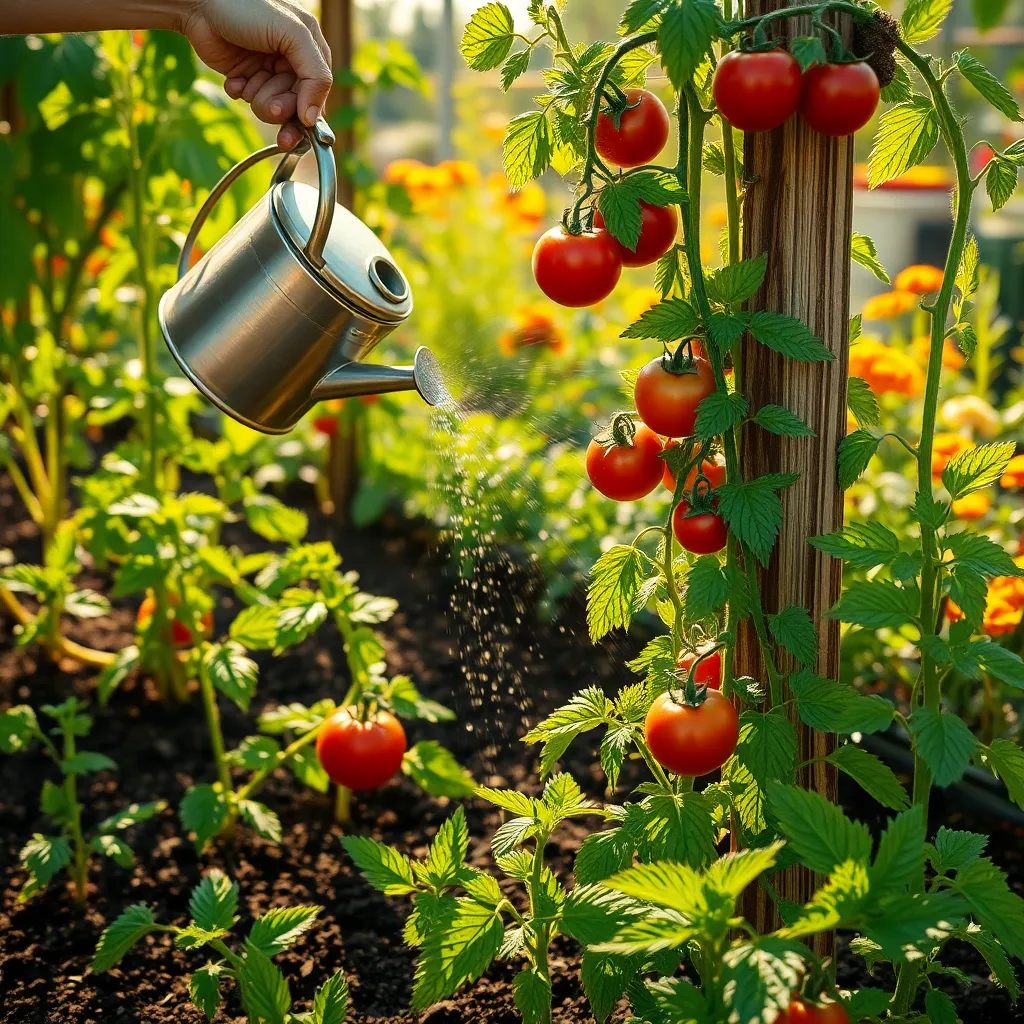
Watering tomato plants properly is crucial for achieving optimal fruit growth. It is best to water tomato plants early in the morning to allow moisture to reach the roots before the heat of the day.
Ensuring consistent moisture levels in the soil is key to preventing issues like blossom end rot. Use a layer of mulch around the base of the plants to help retain soil moisture and reduce evaporation.
For beginners, it’s important to water deeply and infrequently, ensuring that the water reaches several inches into the soil. Advanced gardeners might consider using a drip irrigation system to deliver water directly to the root zone, minimizing water loss and promoting healthy root development.
Be mindful of the soil type in your garden, as sandy soils require more frequent watering than clay soils, which retain water longer. Aim to keep the soil consistently moist but not waterlogged, as too much water can lead to root rot and other diseases.
Soaker Hoses (Efficient Moisture Control)
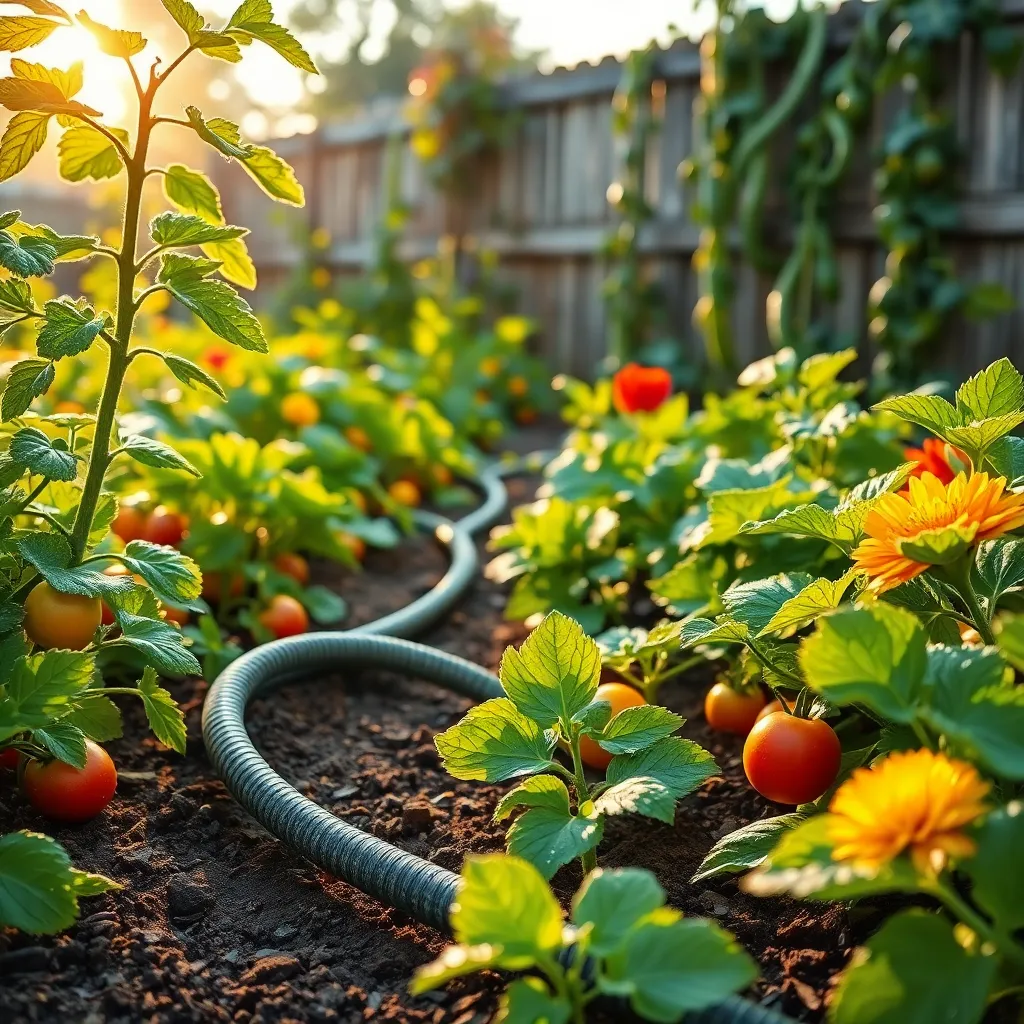
Soaker hoses are an excellent choice for efficient moisture control in your garden. They provide a slow, even distribution of water directly to the soil, minimizing evaporation and runoff.
Installing a soaker hose is simple and can be done by laying it along the base of your plants. Ensure the hose is positioned so that it waters the root zones effectively, as this encourages deep root growth.
Use a timer to automate the watering process, setting it to run early in the morning or late in the afternoon. This timing reduces water loss due to evaporation and helps maintain consistent soil moisture levels, which is crucial for plant health.
For best results, cover your soaker hose with a layer of mulch. This not only helps retain moisture but also keeps the hose in place and protects it from sun damage, extending its lifespan.
Mulching Techniques (Retain Soil Moisture)
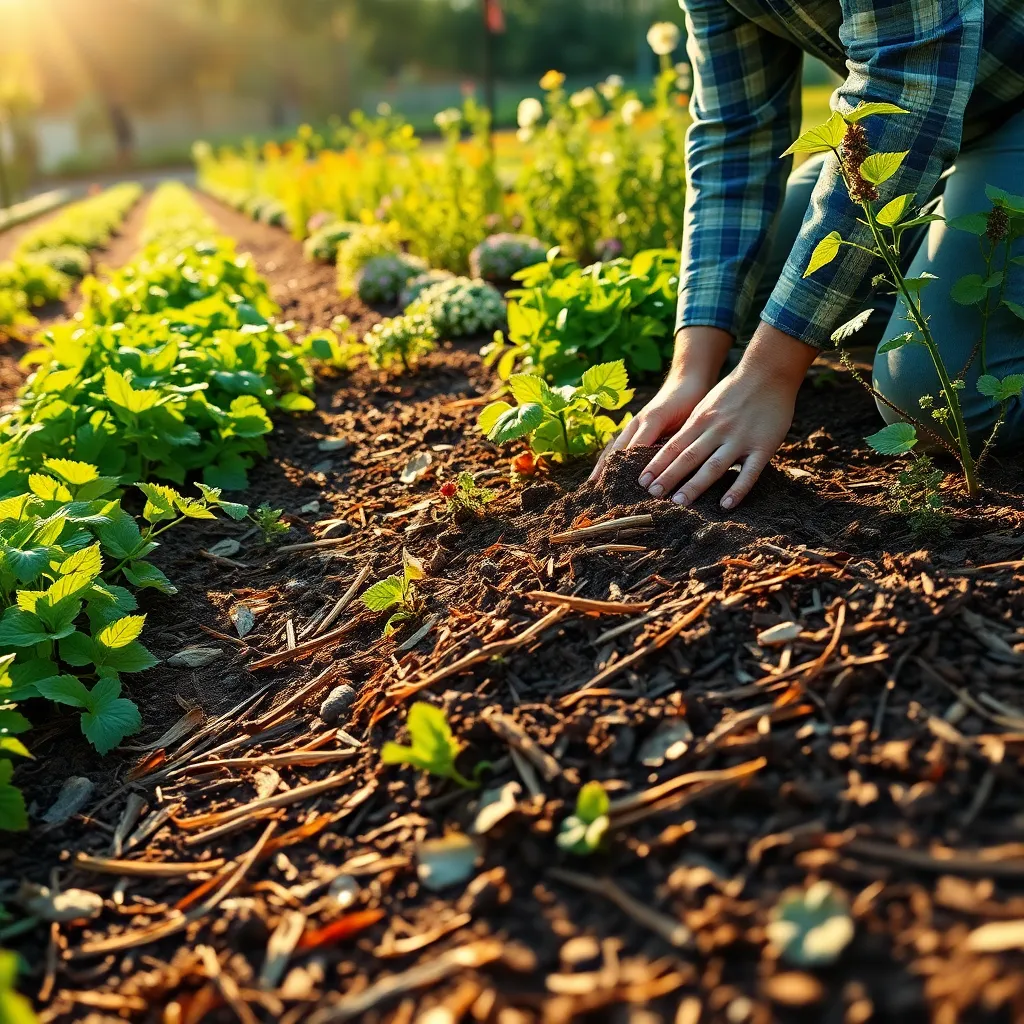
Mulching is a powerful technique to help retain soil moisture and can greatly benefit your garden plants. By covering the soil surface with a layer of organic or inorganic material, you create a barrier that reduces evaporation and keeps roots cool.
Start by choosing the right type of mulch for your garden’s needs. Organic mulches like shredded bark, straw, or leaf mold not only conserve moisture but also enrich the soil as they decompose.
To apply mulch effectively, spread a 2- to 4-inch layer around your plants, ensuring it does not touch the stems to prevent rot. For clay soils, which retain moisture well, a thinner layer may suffice, whereas sandy soils might benefit from a thicker application.
Advanced gardeners can use mulch to regulate soil temperature, which is particularly beneficial in regions with extreme weather conditions. Experiment with different types of mulch to see which works best for your garden, such as using stone or gravel for more decorative and durable options.
Rainwater Harvesting Systems (Eco-Friendly Watering)
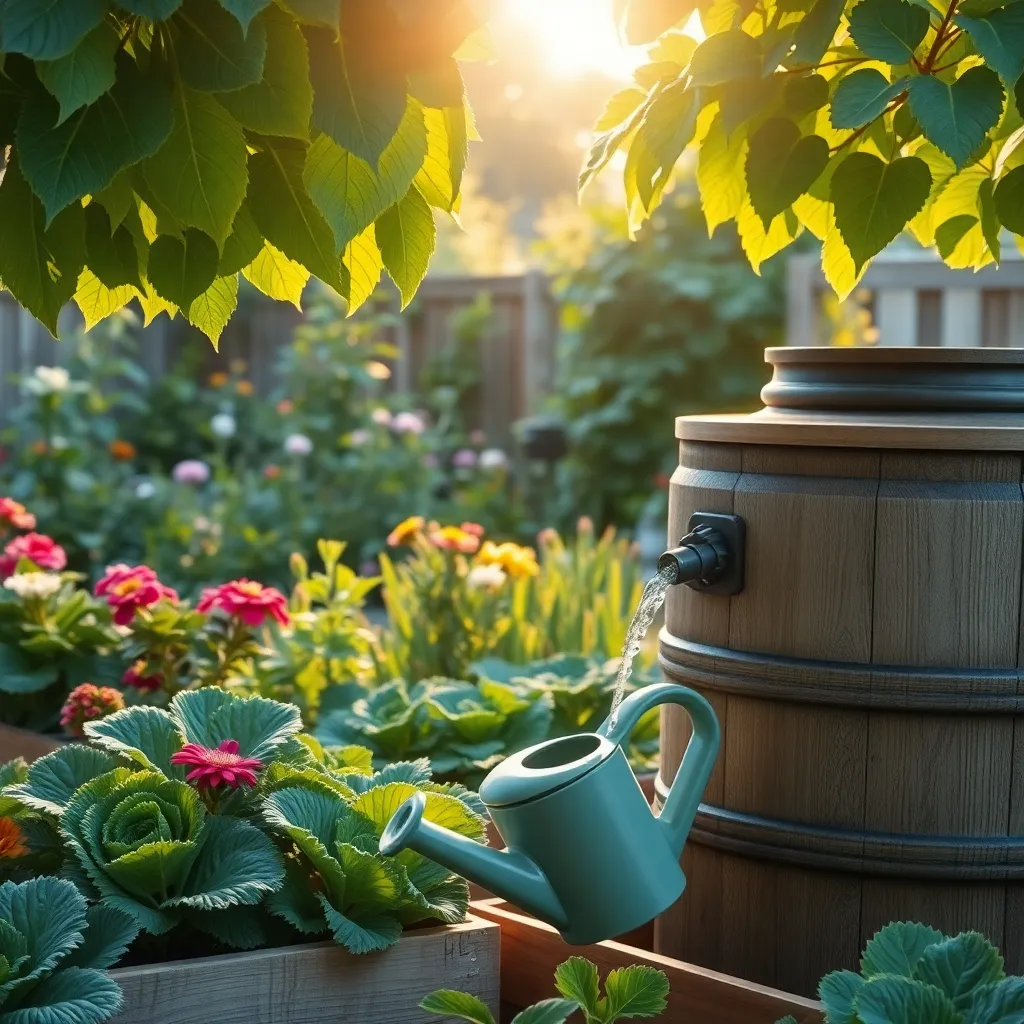
Incorporating a rainwater harvesting system into your garden can significantly reduce your reliance on municipal water supplies. By collecting rainwater, you not only save money but also provide your plants with a natural water source that’s free from chemicals and additives often found in tap water.
To start, set up a rain barrel or series of barrels under your downspouts to capture rainwater from your roof. Ensure the barrels are equipped with lids or mesh screens to prevent debris and insects from contaminating the water.
Once collected, you can use this water to hydrate your garden during dry spells, ensuring each plant receives the water it needs. Water early in the morning so moisture can penetrate the soil before the sun’s heat causes evaporation.
For those with larger gardens, consider installing a drip irrigation system connected to your rain barrels. This method delivers water directly to the plant roots, maximizing efficiency and minimizing wastage.
Morning Watering Routine (Prevent Plant Diseases)
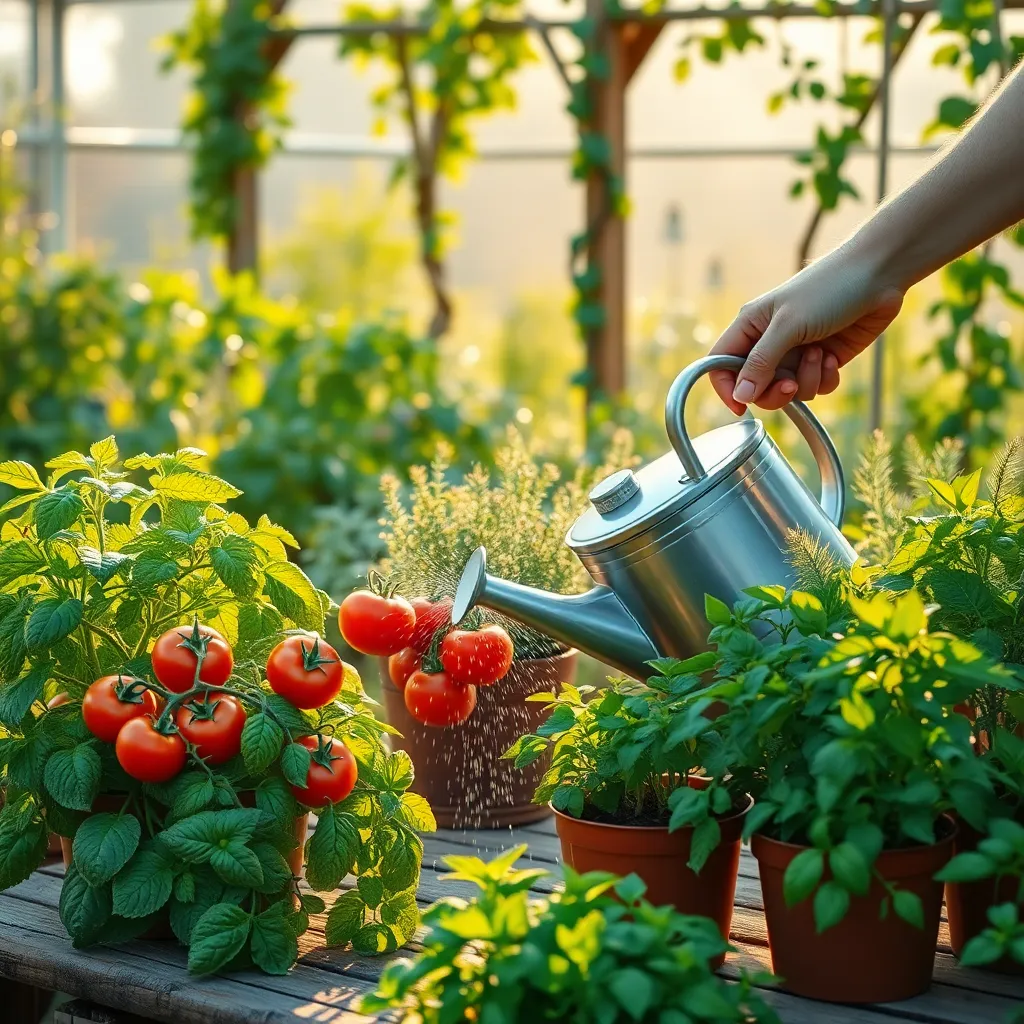
The best time to water your garden is in the morning, ideally before 10 a.m. Watering early allows plants to absorb moisture efficiently before the heat of the day. By watering in the morning, you minimize the risk of fungal diseases, which thrive in wet, cool conditions. Moisture on leaves during cooler evening hours can encourage the growth of harmful fungi and bacteria.
Ensure that you water at the base of the plants to keep the foliage dry, reducing the risk of disease. Using a soaker hose or drip irrigation system can help deliver water directly to the soil, which is more efficient and healthier for plants. Make sure the soil is moist but not waterlogged, as overwatering can lead to root rot. This is particularly important for clay soils, which retain moisture longer than sandy ones.
For beginners, a simple rule is to water deeply and less frequently, promoting stronger root development. Advanced gardeners might consider mulching around plants to retain moisture and regulate soil temperature. Mulch also helps prevent soil splash, which can spread diseases to the foliage. If you have plants with specific moisture needs, like succulents or tropical varieties, adjust your watering routine accordingly.
Check the soil moisture by inserting your finger about an inch deep; if it feels dry, it’s time to water. Avoid using cold water, as it can shock the roots; instead, use water at ambient temperature. As you refine your watering routine, observe your plants for signs of stress like wilting or yellowing leaves, which may indicate over or under-watering. With these practical steps, you can cultivate a healthier, more resilient garden.
Conclusion: Growing Success with These Plants
In nurturing both gardens and relationships, timing is everything. Our exploration into the best time to water your garden plants reveals five key relationship insights: the importance of understanding your partner’s needs, the value of morning rituals to set a positive tone, the significance of communication in fostering growth, the necessity of regular attention to nurture bonds, and the patience required to see the fruits of your efforts. Just as morning watering can invigorate plants, initiating heartfelt conversations early in your day can strengthen your connection.
As an actionable next step, consider setting aside a few minutes each morning to engage in meaningful dialogue with your partner. Start with a simple question like, “What’s one thing you’re looking forward to today?” This small gesture can cultivate a deeper understanding and appreciation for each other.
Remember to bookmark this article for easy access to these relationship insights whenever you need a gentle reminder. As you continue to invest time and effort, your relationship will flourish like a well-tended garden. Embrace the journey, and watch your bonds grow stronger, knowing that the seeds you plant today will blossom into lasting success tomorrow.

